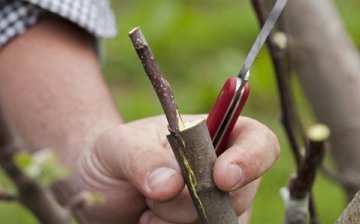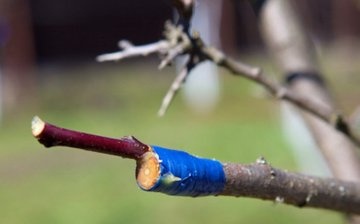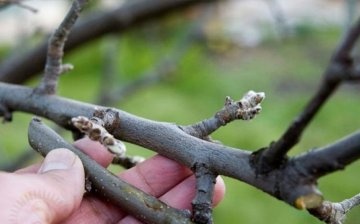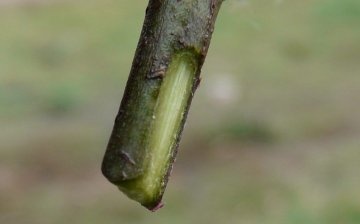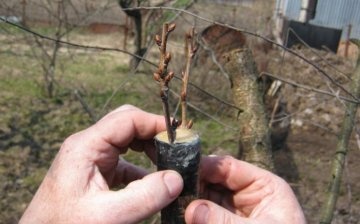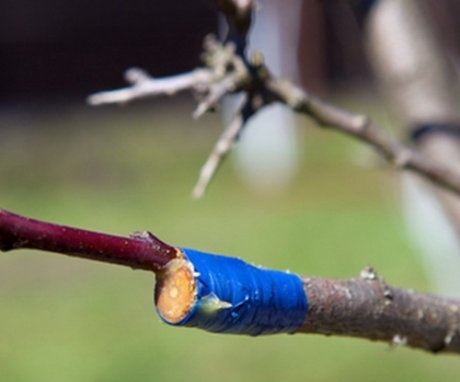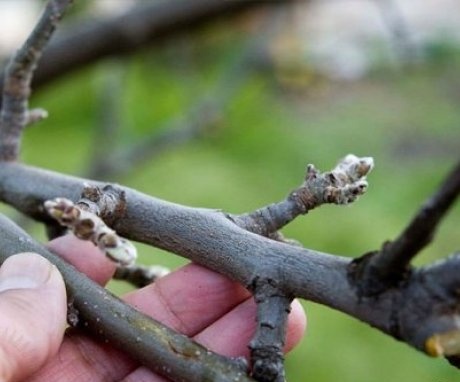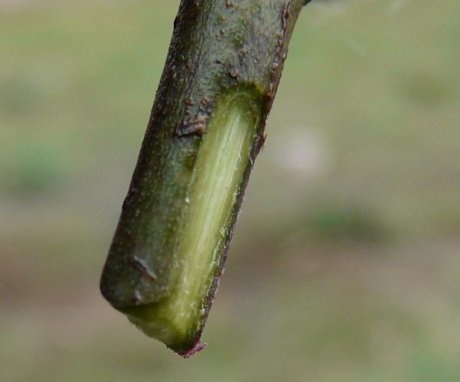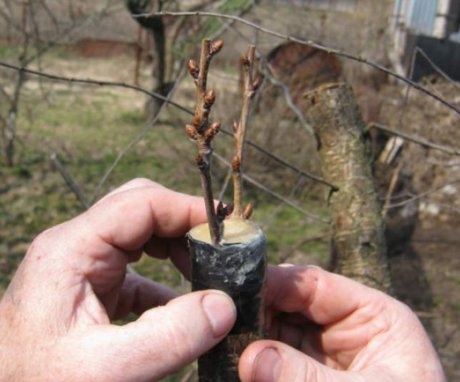Graft and stock - what is it in gardening?
Gardening is a painstaking business that requires knowledge of growing and caring for fruit crops. It is not difficult to acquire seedlings and plant them in selected areas. But the apple or pear variety is not always suitable for high yields. And the quality of the fruit does not please with either taste or sweetness. The situation can be corrected by vaccination, which can only be performed by a competent gardener.
Experiments in gardening are indispensable. And everyone is not averse to being in the role of a breeder-Michurinist, combining different varieties of fruit trees into one whole. The result of the process can be an unusual variety that has absorbed the best qualities of the parent tree or shrub species.
Content:
- Rootstock, scion, grafting - what is takeo?
- Choosing the right stock
- How to choose and prepare a scion?
- Vaccination methods and rules
- Taking care of the tree after grafting
Rootstock, scion, grafting - what is it?
To get new plants, use the technique vaccinations... The procedure is based on the introduction of a living part of one tree into the tissue of another. After fusion, a single organism is obtained, which will successfully grow and develop.
Grafting is carried out on garden plants when necessary:
- cultivate wild
- try a new variety or replace an old one
- increase the production of different fruits from one tree
- increase the longevity of the plant
- restore the crown of the tree
- ensure cross-pollination of crops
The main actors of the vaccination are the scion and rootstock. A cutting of a tree acts as a scion, which will be implanted on the selected tree. One kidney can be a graft. In the future, it is from the scion that the upper part of the fruit tree is formed, which is responsible for the quality of the resulting variety.
The rootstock is called the plant on which the cutting is engrafted. This lower part of the tree is for the organization of nutrition, growth. Thanks to the stock, the new variety can survive in unfavorable conditions and adapt to it. During vaccination, the tree is injured, which will successfully overgrow if the operation is carried out correctly. An important role in the survival rate of the scion is played by cambium, a layer on the tree trunk located between the wood and bark. The selection of vaccination components is carried out taking into account the purpose of the procedure.
Choosing the right stock
As a basis for vaccination, a culture is chosen that is distinguished by its resistance and longevity. It depends on it whether the renewed tree will receive enough nutrition and moisture. When choosing a stock, pay attention to its compatibility with the grafted cuttings. Typically, wild plant species are used as rootstock. It is necessary that they resist frost and sunburn.
The creation of decorative varieties can be achieved by grafting far-related crops.
You can take irgu as a basis, hawthorn and connect with apple tree... It is important to check the compatibility of specific varieties here. In the stone fruit group, it is easier for the gardener to turn around. You can combine cherry plum, peach, felt cherry together.
To change the strength of growth, accelerate fruiting, combine cherries from cherry ordinary. During the period of vaccination, the condition of the stock does not play a special role. He can either be in hibernation or already with leaves. But the age of the stock plays a role.A stalk is grafted onto a tree that is two or three years old. The stock can be both a stump and a broken tree, which retains its vitality.
How to choose and prepare a scion?
Productivity, varietal qualities of a fruit tree will depend on the scion. The harvesting of branches for grafting begins in the fall after the onset of the first frost. Cuttings are cut from the growth of the current year, taken from the south side of the tree.
Their length ranges from twenty to thirty centimeters. For storage, the scion is placed in a cold place to keep the buds dormant. This could be a refrigerator or a cellar. The ideal way to store the scion is considered to be drifts of snow, where it is placed in closed cardboard boxes and plastic bags, as well as in wooden boxes.
In rare cases, you can prepare cuttings in early spring before the buds wake up.
If the vaccination is going to be carried out in the summer, then annual branches with buds are harvested. Before the procedure, the leaves are removed from the cuttings. For the grafting to be effective, the branches for the scion must be healthy with good buds.
Vaccination methods and rules
There are several ways to carry out grafting by cutting:
- For improved copulation, it is necessary to have the same thickness of the rootstock and scion. Take annual cuttings with three to four buds. The upper end of the branch is cut over the bud. Oblique cuts of the same length on the scion and rootstock reach three to four centimeters in diameter. Be sure to leave the tongue at the top a third of the length. The tongues are bent so that one goes after the other and the cambial layers are connected. The junction is tied, and the top is coated with garden varnish. You can also tie it with an adhesive plaster. The upper end of the cutting is covered with pitch. After the increase appears, the strapping is loosened by cutting the winding across.
- Grafting in butt is used when the thickness of the stock reaches more than two centimeters. It is cut across, making a slight tilt to one side. On the high side, cut off the bark and some wood. The cut width corresponds to the thickness of the scion. At the cutting, an oblique cut with a tongue is made. The parts are connected and tied in the same way as in the previous method.
- If the thickness of the stock reaches four centimeters, then use the graft for the bark. An oblique cut of the cutting is inserted completely behind the cut bark of the tree. It is necessary that the oblique cut of the cutting completely goes under the bark.
- When the stock is twice as thick as the cuttings, then the vaccination is chosen according to the method of Khudyakov. The width of the rootstock plane is reduced using a second cut at an angle of twenty degrees to the first plane.
- The place for grafting on the rootstock is located at a distance of 30-40 centimeters from the base of the knot on the central shoot.
Grafting by any means is carried out quickly, otherwise the edges of the cuttings will dry out. The cuts are made with a sharp knife. Their surface should be smooth, without chipping. Places above and under the winding must be covered with garden varnish.
It is important to maintain cleanliness during the operation, because dust particles, grains of sand or insect larvae trapped in the wounds can weaken the grafted tree. If a graft was successful, then shoots will appear on the grafted cuttings.
Taking care of the tree after grafting
As any operation for a living organism does not pass without leaving a trace, after grafting, the tree needs to be paid attention to:
- Young grafted shoots, if they have taken root, grow quickly. To stimulate the growth of the crown, they pinch them in the first year, removing the tops of strong-growing branches.
- It is important to protect the vaccine from strong winds. You can tie a twig to a support.
- Birds can also break off a fragile shoot. They are protected from them by surrounding the tree with a fence. Tying above and below the grafting site of the stick will also help.
- The scion and rootstock constriction is cut so that no fracture occurs and a thickening forms at the grafting site.
- Wild growth that will form on the rootstock must break off.Otherwise, all the nutrients will be taken to her, and the grafted branch will not have enough food.
- A grafted tree requires regular watering. It is carried out as the top layer of the soil of the trunk circle dries up.
- In addition, the land around the fruit crop is loosened to a shallow depth, dug up, applying fertilizers in the form of humus, superphosphate and potassium salt. The procedures are carried out carefully so as not to damage the roots of the plant.
- Before the onset of winter, a layer of mulch is laid around, which should not be close to the tree trunk.
With properly organized care, after two or three years, the grafted tree will delight you with the fruits of a new variety.
More information can be found in the video:



